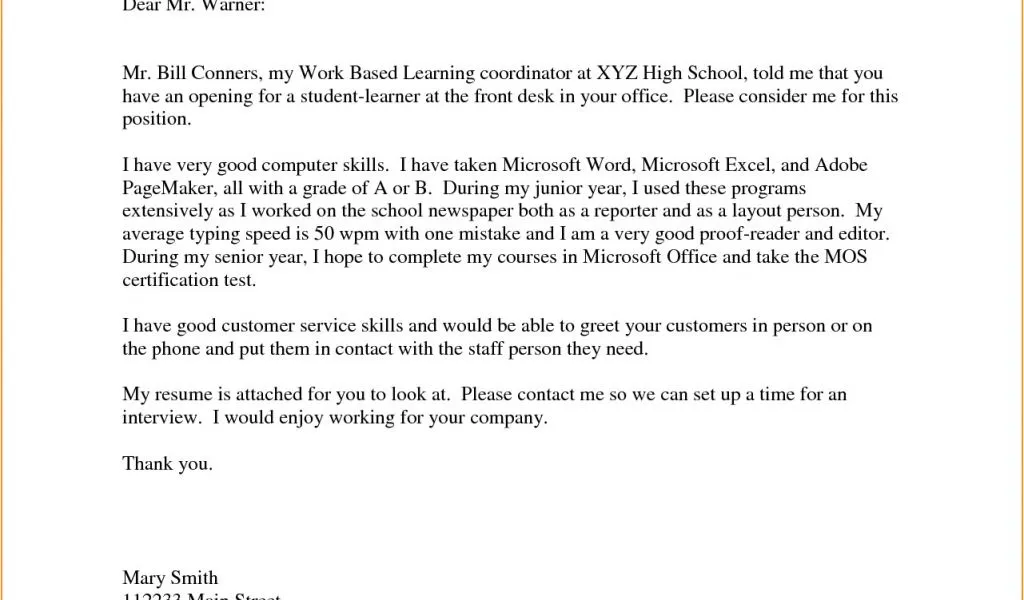Why a Cover Letter is Crucial (Even with No Experience)
Many high school students feel that a cover letter is unnecessary, especially when they lack direct work experience. However, a well-written cover letter can be your secret weapon. It’s your opportunity to showcase your personality, highlight transferable skills, and express genuine enthusiasm for a position. Even if your resume is light on traditional employment, a strong cover letter demonstrates professionalism, communication skills, and a proactive approach to job hunting. It provides context for your experiences, explains your career goals, and helps you stand out from the competition. When applying for jobs or internships with little to no experience, a cover letter becomes even more essential, it allows you to explain what your goals are and why you are the best choice. Without one, you miss a critical opportunity to make a strong first impression and convince an employer to give you a chance.
Understanding the Purpose of a Cover Letter
A cover letter serves several key purposes. First and foremost, it introduces you to the hiring manager and provides a glimpse into your personality and work ethic. It expands on the information in your resume, providing more context and depth to your qualifications. A cover letter allows you to explain why you’re interested in the specific role and company, demonstrating that you’ve done your research. Secondly, it helps you tailor your application to each specific job, emphasizing the skills and experiences most relevant to the position. You can use the cover letter to address any gaps in your resume, such as a lack of experience, by focusing on your transferable skills. In essence, your cover letter is your personal sales pitch, designed to persuade the employer to read your resume and consider you for an interview.
Highlighting Transferable Skills
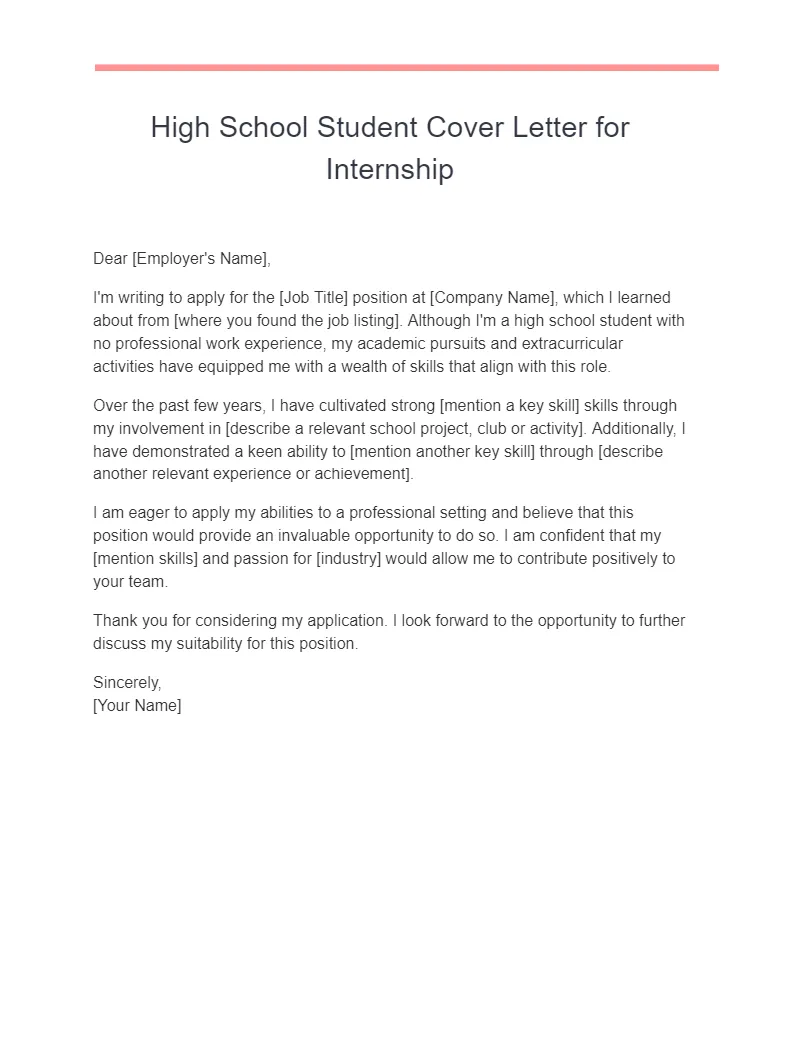
Transferable skills are those abilities and qualities that you’ve developed in one setting and can apply to another. These are especially important for high school students with limited work experience. Think about skills gained through school projects, extracurricular activities, volunteer work, or even hobbies. These can be just as valuable as formal job experience. Identifying and highlighting these skills is crucial to demonstrate your ability to succeed in the role. Focus on what you’ve learned and how it relates to the job requirements. Your goal is to bridge the gap between your lack of experience and the skills needed to excel, thereby convincing the hiring manager that you are the best choice for the role.
Identifying Your Skills
The first step is to identify your transferable skills. Create a list of all the skills you possess, regardless of how or where you acquired them. Consider all aspects of your life: academic achievements, clubs and sports, volunteer experiences, and even personal projects. Examples of important skills include communication, teamwork, problem-solving, time management, leadership, organization, and adaptability. For each skill, think about how you’ve used it. What specific examples can you provide? What were the outcomes? This self-assessment process will help you to tailor your cover letter to each role.
Examples of Transferable Skills
Here are examples of transferable skills and how they can be demonstrated: Teamwork can be shown through participation in a sports team or group projects, highlighting your ability to collaborate with others. Communication skills are evident in debates, presentations, and writing assignments, demonstrating your ability to express ideas clearly. Time management can be shown through balancing schoolwork, extracurriculars, and other commitments, showcasing your organizational and prioritization abilities. Leadership can be highlighted through leading a club, organizing an event, or being a team captain, showing your ability to guide and motivate others. Problem-solving is seen through overcoming challenges in school or personal projects, showcasing your analytical abilities. These skills, when properly presented, will help create a great first impression.
Showcasing Your Personality and Enthusiasm
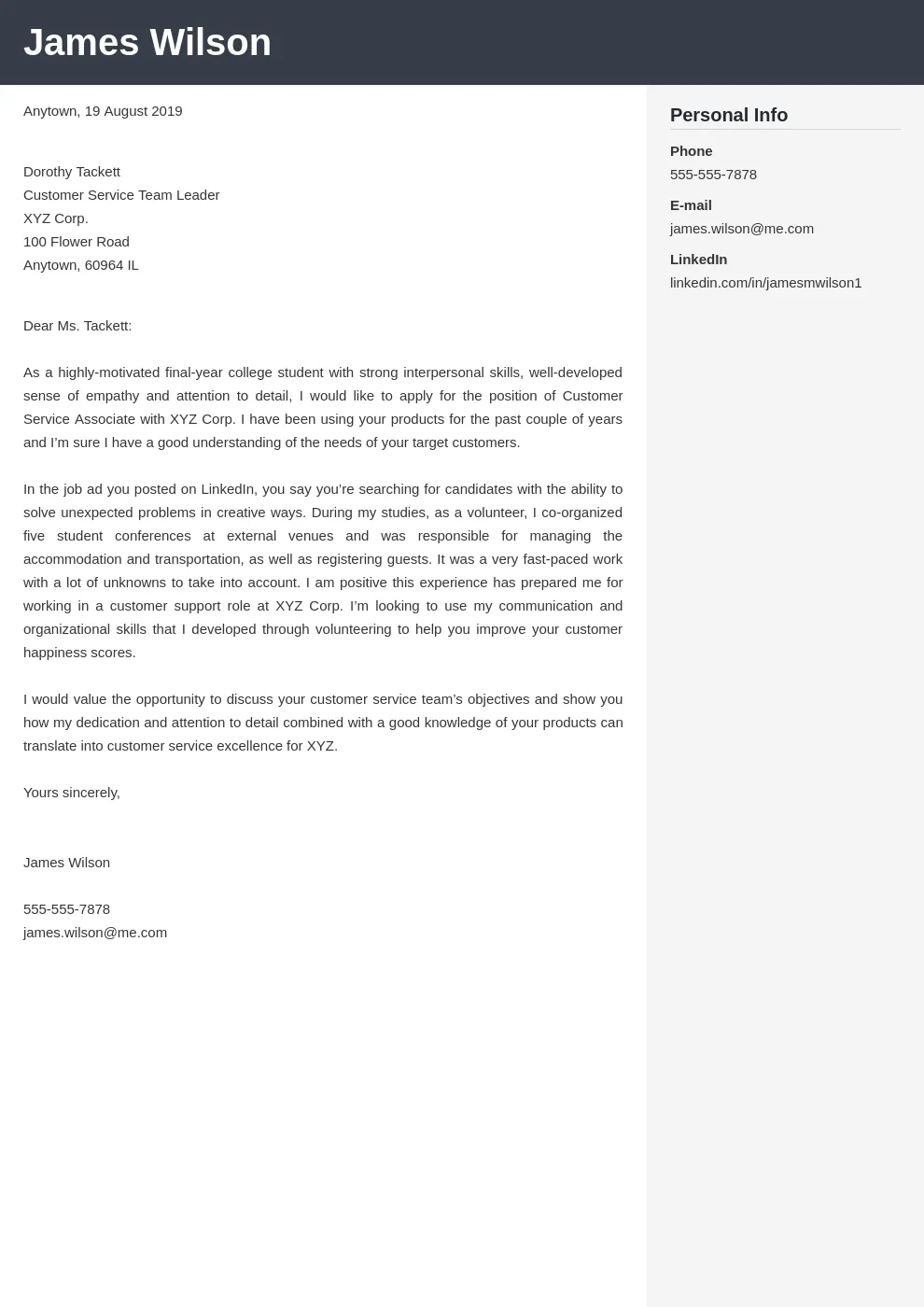
A cover letter is your chance to let your personality shine through. While the resume is a formal document, the cover letter allows you to demonstrate your enthusiasm for the opportunity and your genuine interest in the company. Use a professional but friendly tone. Avoid sounding generic and show a genuine interest in the position. Be specific about why you are interested in the company and the role. What attracts you to the company? What are you excited to learn? Be yourself, and let your passion for the job come through. Remember, employers are looking for candidates who are not only qualified but also a good fit for their company culture.
Crafting a Compelling Opening
The opening paragraph is the first impression you make. It should grab the reader’s attention and make them want to read more. It needs to be concise, engaging, and clearly state your purpose. The opening should immediately identify the position you are applying for and where you found the job listing. This can be from a job board, a company website, or through a contact. Briefly mention why you are excited about the opportunity. Start with a strong statement that reflects your interest and qualifications. Avoid generic phrases like “I am writing to apply.” Be specific, and tailor the opening to the specific job and company. Consider beginning with a statement about your enthusiasm or a brief mention of a key skill. It is the most important part of the cover letter.
Mentioning the Position and Where You Found It
Start by clearly stating the position you are applying for. Be specific and include the job title, as listed in the job posting. Follow this by mentioning where you found the job listing. This helps the hiring manager track their recruitment efforts. You can say something like, “I am writing to apply for the [Job Title] position, as advertised on [Platform].” Or, “I am very excited to apply for the [Job Title] position, which I saw on [Platform].” This provides context and shows that you are organized and attentive to detail, which are important qualities in any job applicant.
Expressing Your Enthusiasm for the Opportunity
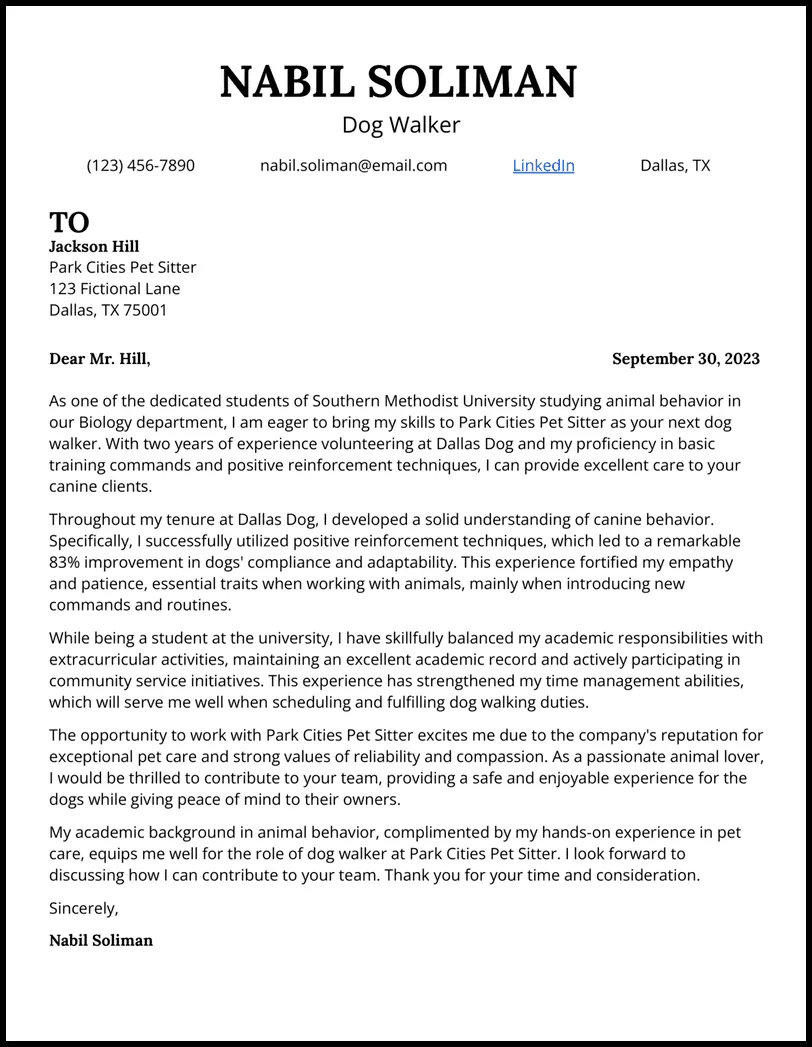
After stating the position and where you found it, express your genuine enthusiasm for the opportunity. Show that you have done your research about the role and the company. Mention what specifically interests you. What aspects of the job or the company’s mission resonate with you? For example, you could state, “I am particularly excited about the opportunity to contribute to [Company’s mission] because I am passionate about [relevant topic].” This demonstrates that you are not just sending out a generic application, but that you have a true interest in the role and the company’s work. Be specific and use powerful language to demonstrate your excitement.
Body Paragraphs Building Your Case
The body paragraphs are where you make your case. This is where you highlight your transferable skills, experiences, and qualifications. The body paragraphs should be well-structured, clear, and easy to read. Use specific examples to support your claims. Describe your experiences and achievements, emphasizing their relevance to the job requirements. Focus on the skills and qualifications mentioned in the job description. Aim to connect your skills and achievements with the requirements of the job. Show how your skills can help you excel in the role. Use clear and concise language, avoiding jargon or overly complex sentences. Your goal is to convince the hiring manager that you are a good fit for the role.
Describing Your Relevant Experiences
Even without direct work experience, you likely have relevant experiences that demonstrate your skills. Focus on your extracurricular activities, volunteer work, school projects, and any other relevant experiences. Provide context and describe your responsibilities and accomplishments. What were your tasks? What challenges did you face? What did you achieve? When describing your experiences, use the STAR method: Situation, Task, Action, Result. Briefly describe the situation, outline the task you needed to accomplish, explain the actions you took, and then describe the results. This method is effective in showcasing how you used your skills to achieve specific outcomes. It is also a great way to help you with the interview process.
Highlighting Achievements and Responsibilities
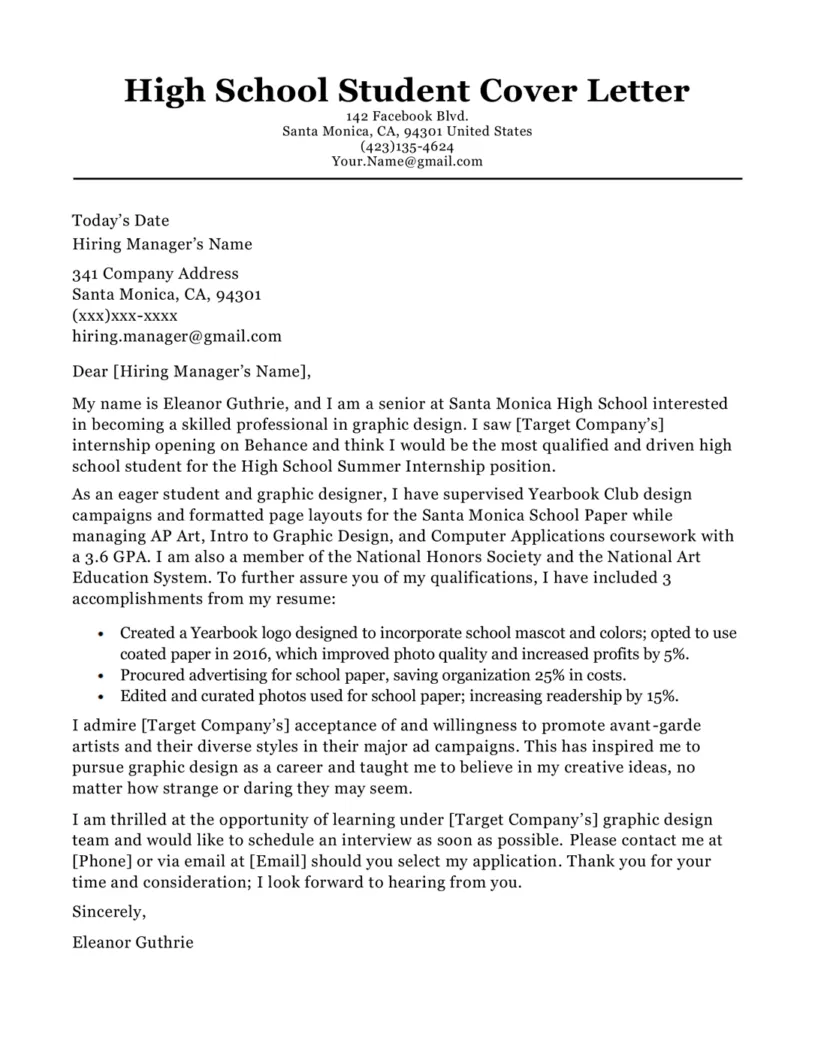
Instead of simply listing your responsibilities, highlight your achievements. What did you accomplish in your roles? How did you make a difference? Whenever possible, quantify your achievements with numbers. Did you increase sales? Improve efficiency? Reduce costs? For example, “As the treasurer of the debate club, I managed a budget of $500 and successfully fundraised $200 through various activities.” Focusing on results, rather than just tasks, demonstrates that you can deliver results and contribute to the organization’s success. This method will show the hiring manager that you are capable and ready for the role.
Showcasing Skills Through Examples
Use specific examples to showcase your skills. For example, instead of simply stating that you have strong communication skills, describe a specific instance where you effectively communicated with others. You could describe a time you gave a presentation, mediated a conflict, or explained a complex concept in a clear and concise way. The goal is to provide concrete examples that illustrate your abilities. This gives the hiring manager a clear understanding of your skills and how you would apply them in the role. By providing details and examples, you bring your skills to life and make them more memorable.
Closing the Letter with Confidence
The closing paragraph should reiterate your interest in the role, express your appreciation for the reader’s time, and include a call to action. It should be concise, professional, and leave a positive final impression. Do not introduce any new information here. It’s your last chance to reiterate your enthusiasm and prompt the reader to take action. This is also where you thank them for their time and consideration.
Reiterating Your Interest in the Role
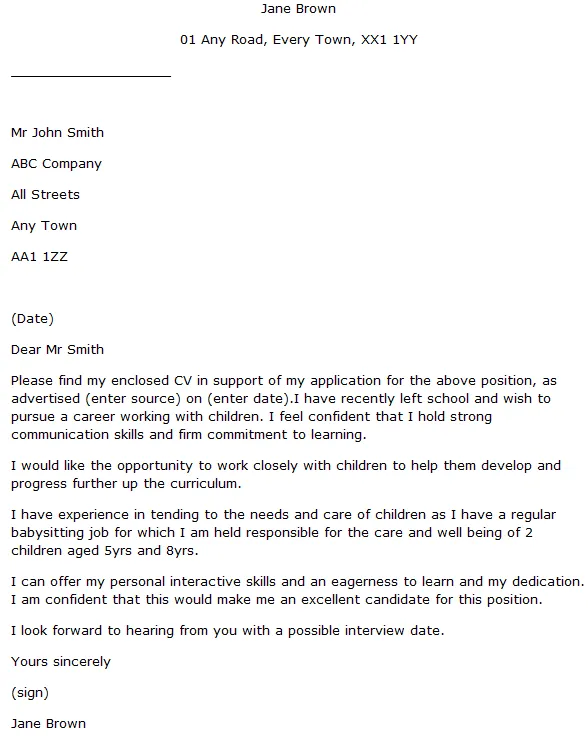
Reiterate your strong interest in the role. Briefly restate why you are excited about the position and why you believe you are a good fit. This will re-emphasize your key qualifications and demonstrate your genuine enthusiasm. Ensure that your closing reinforces the key points you have made throughout your letter. You can say something like, “I am confident that my skills and enthusiasm make me an excellent fit for this role, and I am eager to contribute to your team.” Or, “I am excited about the opportunity to utilize my skills in [relevant area] and contribute to [company’s goal].”
Adding a Call to Action
Include a clear call to action. Tell the hiring manager what you want them to do next. This is your invitation to move forward in the hiring process. Your goal is to express your interest in an interview. You can say, “I am eager to discuss my qualifications further and am available for an interview at your earliest convenience.” Or, “Thank you for your time and consideration. I look forward to hearing from you soon and discussing how I can contribute to your team.” Including a call to action is essential, and it provides a clear next step for the hiring manager.
Proofreading and Formatting Tips
Before you send your cover letter, take the time to proofread and format it carefully. This shows professionalism and attention to detail. Proofreading is essential for catching any errors in grammar, spelling, and punctuation. Formatting also makes your cover letter easy to read. Well-formatted and error-free cover letters make a positive first impression and increase your chances of getting selected for an interview. Failing to do these things can quickly cause a candidate to be rejected.
Formatting Your Cover Letter
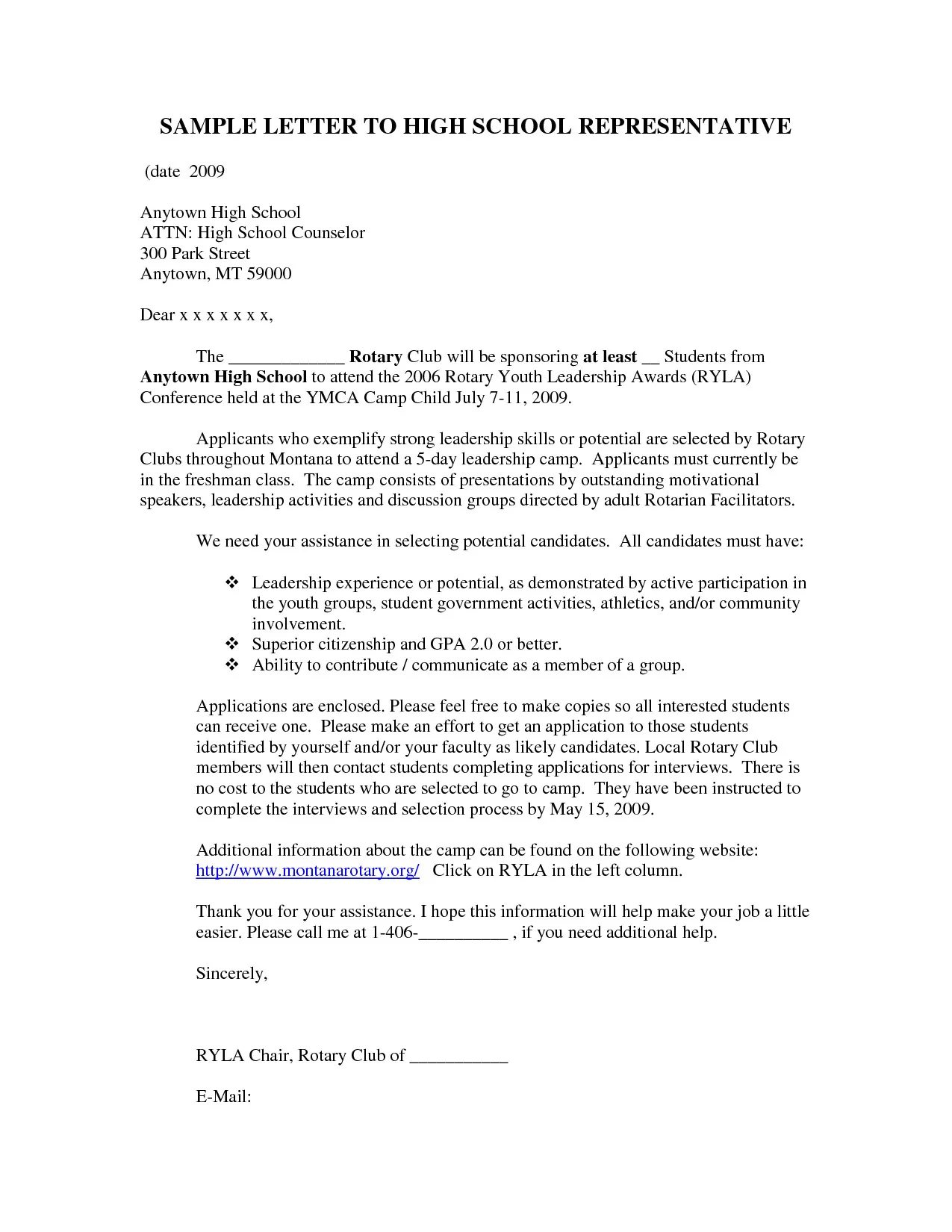
Use a professional format for your cover letter. Choose a standard font, such as Times New Roman or Arial, in a size between 10 and 12 points. Use single spacing within paragraphs and double spacing between paragraphs. Make sure your cover letter is one page long. Include your contact information at the top of the letter. Keep the layout clean and easy to read. Use clear headings and subheadings to organize your content. This makes it easy for the hiring manager to scan the letter and find the most important information. A well-formatted cover letter is a key aspect of creating a positive first impression.
Proofreading for Errors
Proofreading is essential. Check your cover letter for any errors in grammar, spelling, and punctuation. Ask someone else to read it. It’s easy to miss errors in your own writing. Reading your letter aloud can also help you catch any awkward phrasing or grammatical mistakes. Ensure you use proper grammar. Check all the names, titles, and company names. Make sure that all of the contact information is correct. A single mistake can be detrimental. These small details show your attention to detail and make a lasting impression.
Cover Letter Examples for inspiration
To help you, it is a good idea to look at some cover letter examples, as this will give you an idea of how to structure your letter and what to include. There are many free cover letter templates available online. Use these templates as a starting point, but tailor the content to fit your own experiences and the specific job. Be inspired, but make sure your letter is original and reflects your personality and skills. There are many online cover letter resources for high school students. Seek them out and make use of them.
